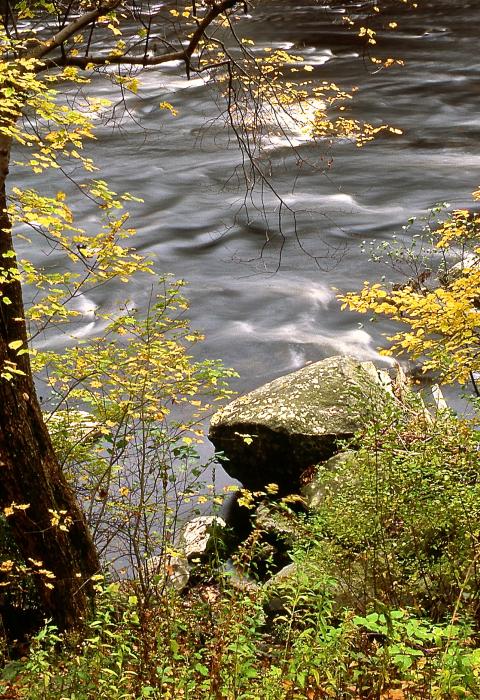West Branch Farmington River
Connecticut
In August 1994, Congress added 14 miles of the Farmington River's West Branch to the National Wild and Scenic Rivers System; another 1.1 miles were added in March 2019. These exciting milestones in the river's history recognize the Farmington's beauty and character and ensures that it will be enjoyed by generations to come.
Every year, thousands of people canoe, kayak, and fish the waters of the Farmington, as well as visit the state parks, forests and historic mills that dot the river's edge. The river is an important habitat for wildlife, such as otters and bald eagles, and the Farmington River Valley is currently the only place in Connecticut with nesting bald eagles. In addition, the Atlantic salmon may return to the river after an absence of decades. Recreational value, rare wildlife, outstanding fisheries and a rich history are some of the outstanding features of the Farmington. It is managed through a partnership among local, state and federal interests.
Designated Reach
August 26, 1994 and March 12, 2019. The segment of the West Branch and mainstem extending from immediately below the Goodwin Dam and Hydroelectric Project in Hartland to the downstream to the confluence with the Nepaug River.
Outstandingly Remarkable Values
Culture
Noteworthy remnants of the Farmington Valley’s long history of human activity can be found throughout the area. Evidence of early native inhabitants includes important documented archaeological sites. Also prevalent are historic structures associated with the early European settlement. There are a large variety of 19th century structures and buildings in state and locally designated historic districts.>
Fish
The Farmington River is a high-quality fish habitat, significant to both Atlantic salmon restoration and to prime trout stream. The Farmington and its tributaries are the largest of sixteen rivers in New England targeted for anadromous fish. It is the prime spawning ground for salmon and proves to be critical to the success of their restoration.
Recreation
The Farmington River supports tremendous recreational use with highly popular trout fishing, boating, and tubing. It is widely recognized as one of New England’s premier trout streams and draws anglers from throughout the Northeast and beyond. The mixture of flatwater, riffles, and Class I-III rapids draws a large number of paddlers. The most heavily used segment of the river for boating and tubing is where the river drops through Satan’s Kingdom Gorge. The setting within the Gorge is spectacular, with a stretch of Class III whitewater framed by steep cliffs on both banks. In addition, the land along the river supplies a wide range of recreational opportunities.
Wildlife
The outstanding quality of water in the Farmington River corridor supports a large quantity and diversity of wildlife and vegetation. The variety of habitats, large tracts of undeveloped land, and year-round availability of water all contribute to the area’s suitability for both indigenous and migrant wildlife. The river provides an area for feeding for the bald eagle, particularly in winter when other areas are frozen. Eagle use of the segment is directly dependent upon protection of its abundant fisheries, as well as maintenance of the high environmental quality and largely natural character of the river corridor.

